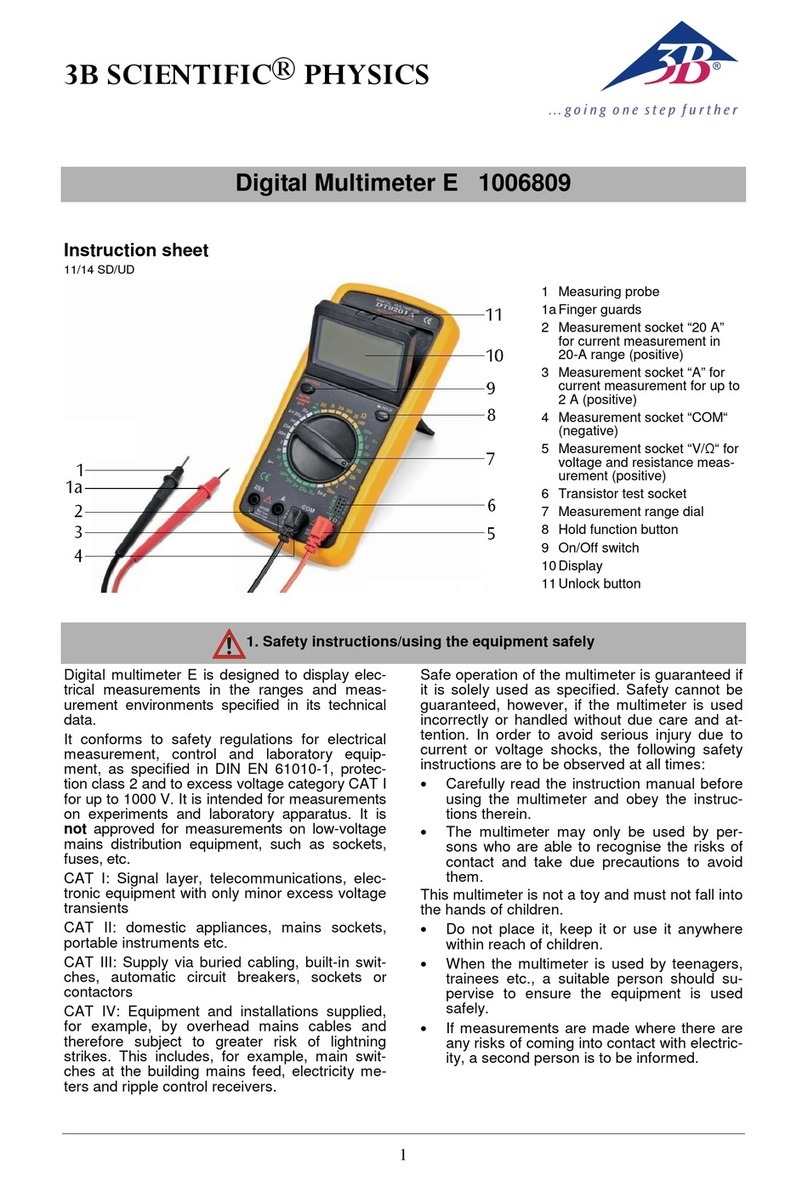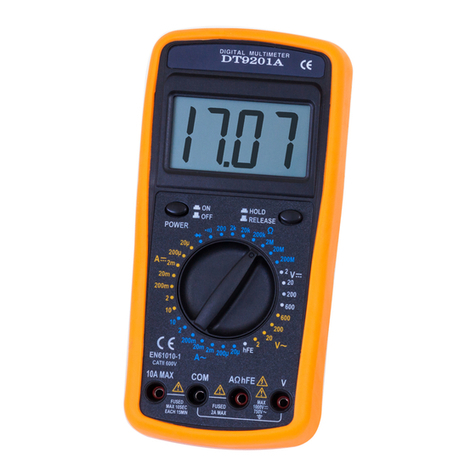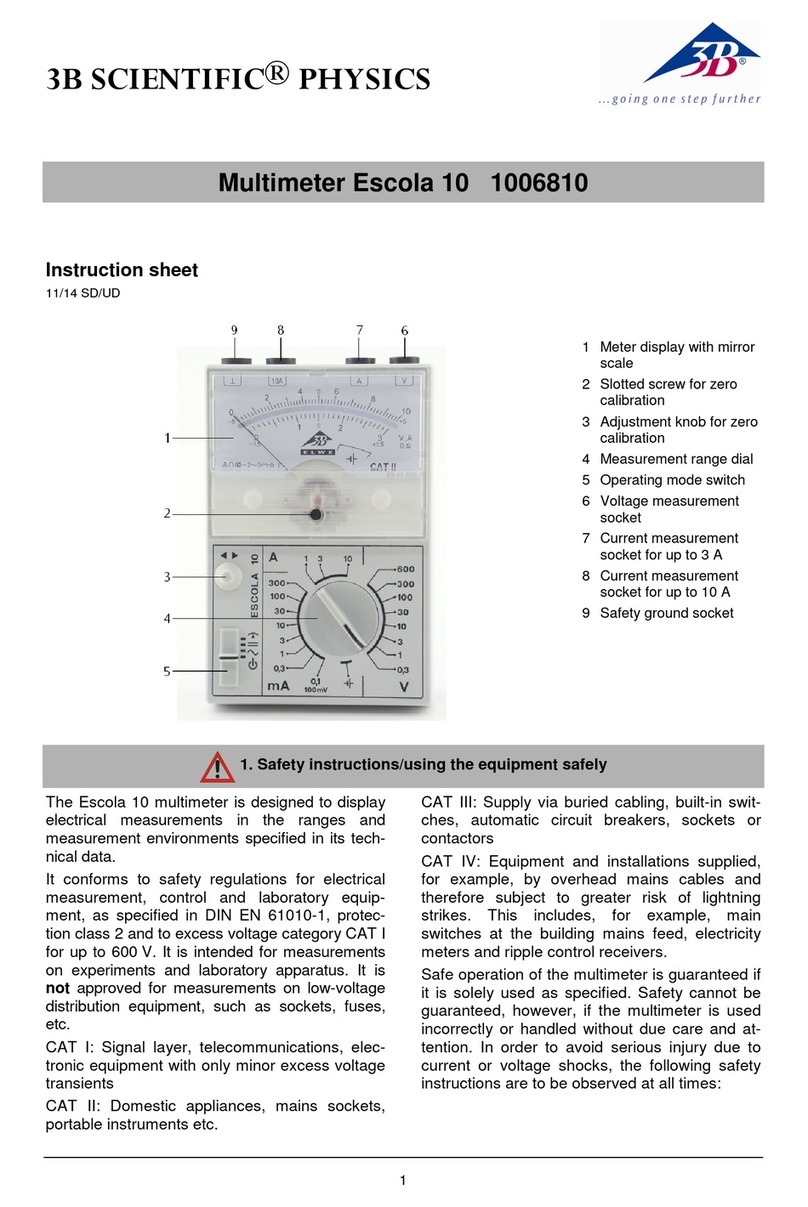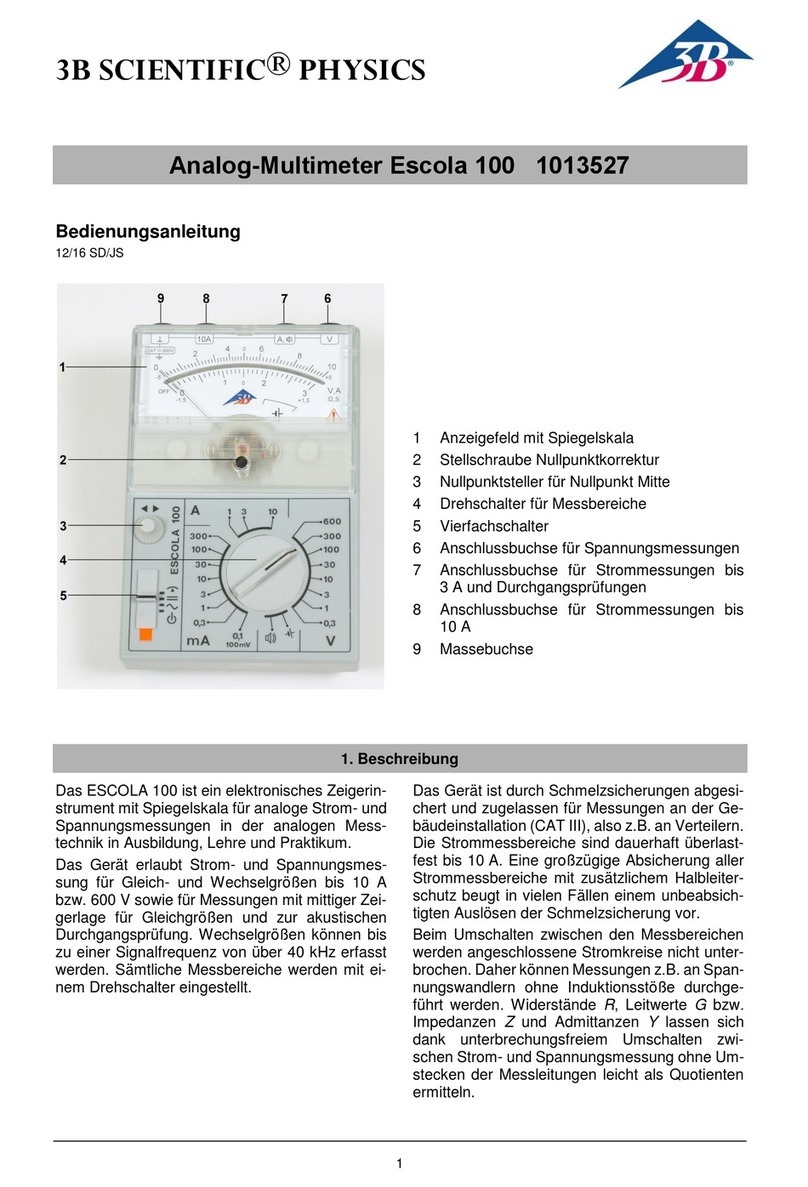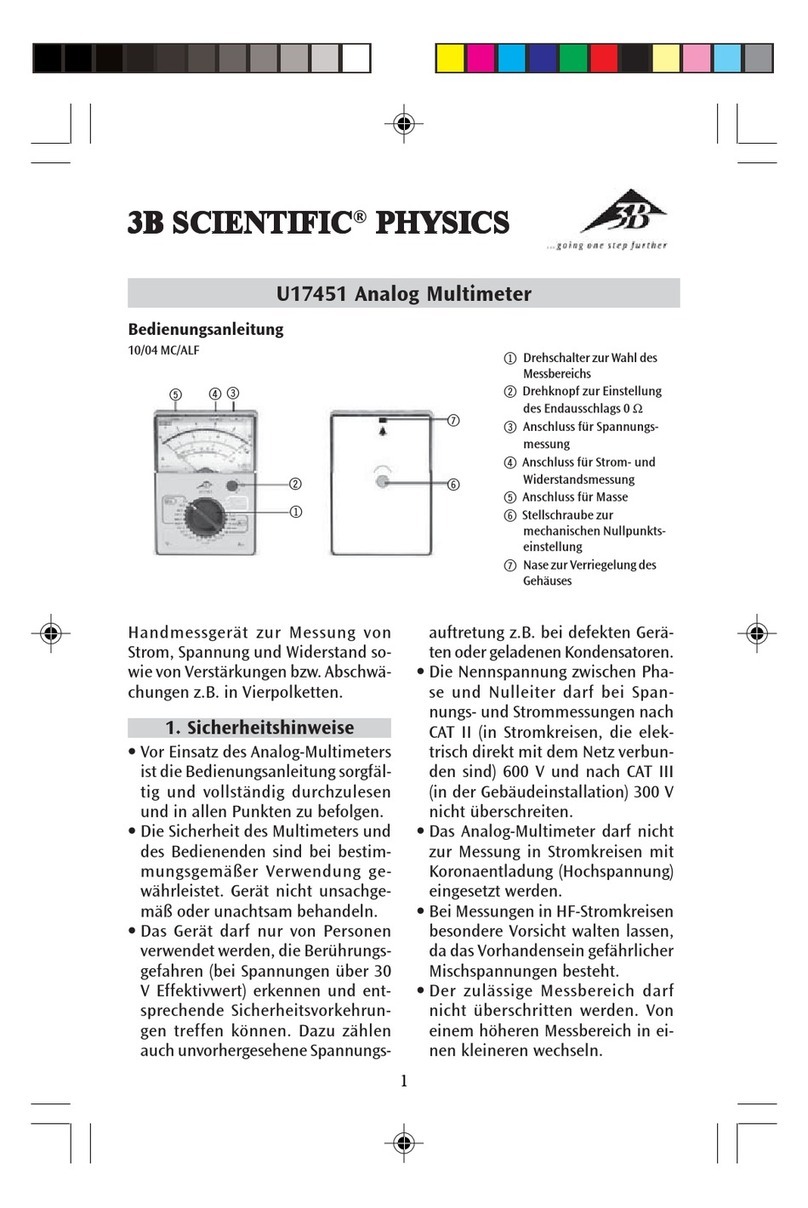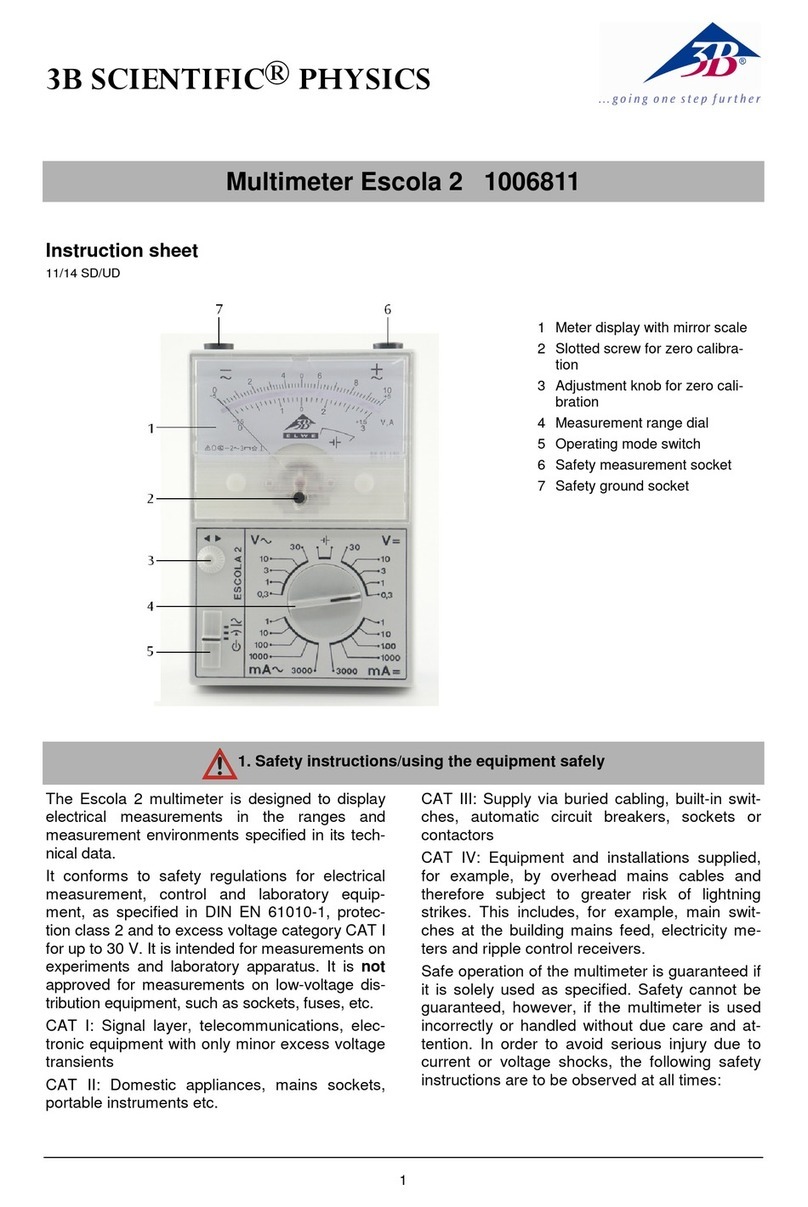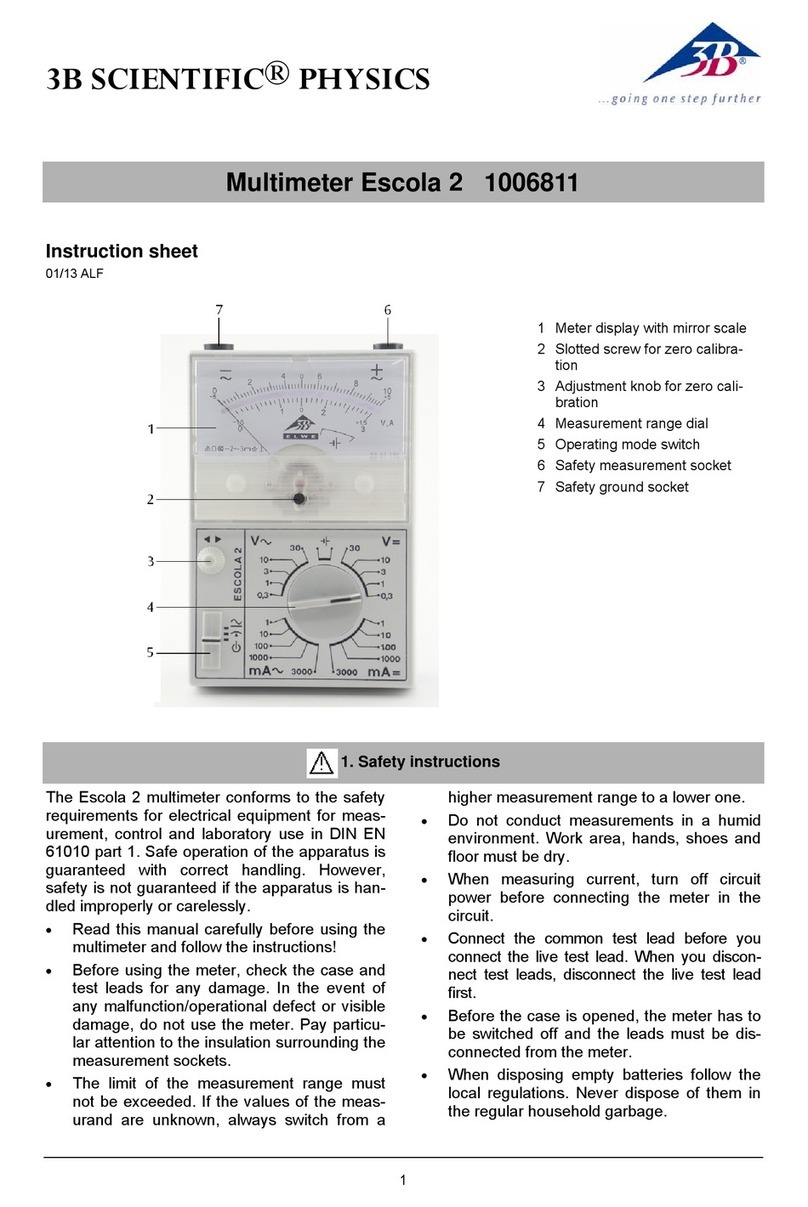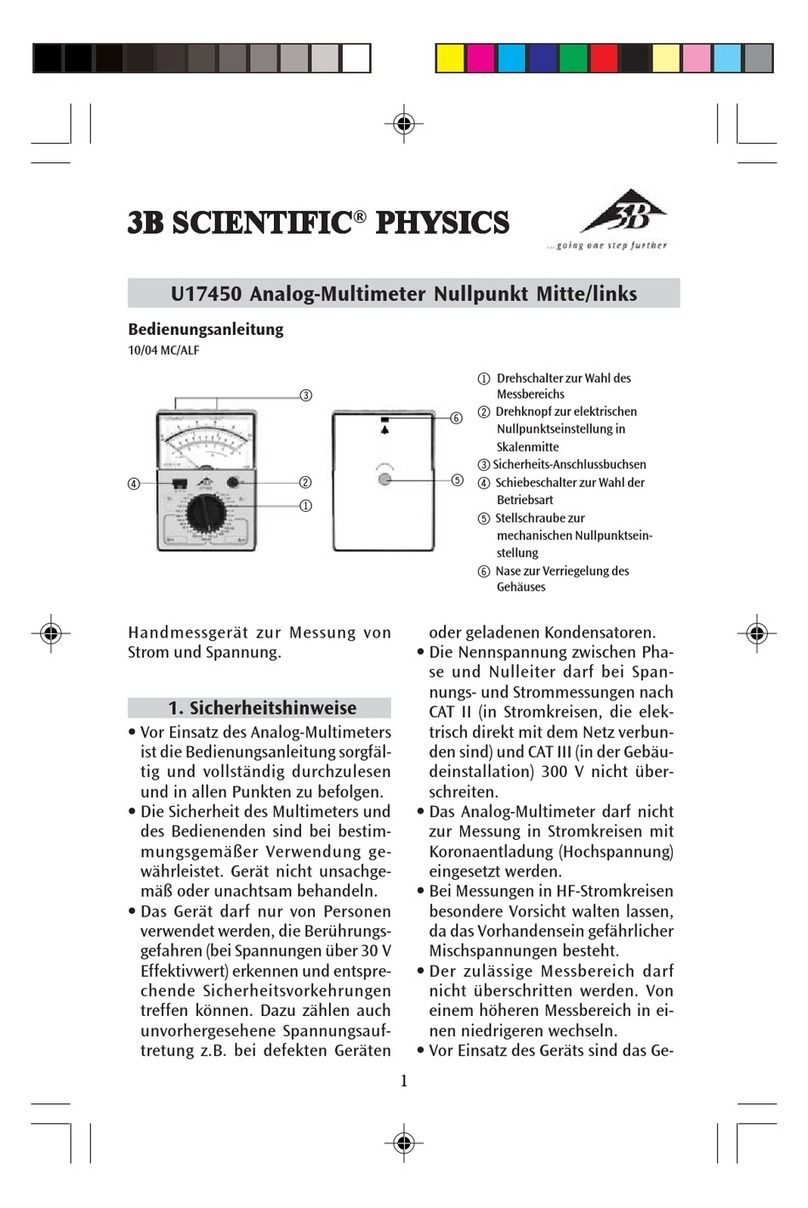4
4.4 Current measurement
•When taking any current measurements
connect the multimeter in series to the load
in the circuit, which has the least potential
with respect to ground.
•Measurements conducted in the 3 A range
may not take longer than 1 min.
4.4.1 Direct current up to 1 A
•Using the rotary switch (1) select the corre-
sponding measurement range “1 A,...,50 μA
DC”.
•Connect the multimeter and take a reading
on the V, A, DC scale.
4.4.2 Alternating current up to 3 A
•Using the rotary switch (1) select the corre-
sponding measurement range “3 A,..., 3 mA
AC”.
•Connect the multimeter and take a reading
on the V, A, AC scale.
4.5 Measuring resistance
•Using the rotary switch (1) select the corre-
sponding measurement range “x 100 Ω,..., x
1 Ω”.
•Connect the multimeter and take a reading
on the Ωscale.
•When performing measurement on semi-
conductors use the following terminals: posi-
tive pole connected to “COM” and negative
pole connected “A A, Ω”.
•Resistance measurement is carried out us-
ing the DC voltage from the battery being
used. Since the battery is under extreme
loading during measurements in the “x 1 Ω”
range, the measurement should only be of a
brief duration.
•Only measure zero-voltage elements due to
the fact that external voltages falsify meas-
ured values.
•When resistances measurements are car-
ried out involving longer periods and switch-
over to other measurement ranges is com-
plete check for 0 Ωfull scale deflection and
adjust, if necessary.
4.6 Attenuation and gain measurement
•In communications engineering the gain or
attenuation of a signal is specified in deci-
bels as the logarithm of the ratio between
the measured voltage and a defined refer-
ence voltage. Positive values correspond to
a gain and negative values reflect attenua-
tion. The reference voltage of the multimeter
amounts to 0.775 V (= 1 mW at 600 Ω). With
this voltage there is a gain of 0 dB.
•Using the rotary switch (1) select the corre-
sponding measurement range “600,..., 10 V
AC”.
•Connect the multimeter and take a reading
on the dB scale.
•Since this scale is only valid for the 10 V
measurement range, in the other measure-
ment ranges a relative constant must be
added to the value obtained from the scale:
Measurement range Constants
30 V 10 db
100 V 20 db
300 V 30 db
600 V 36 db
5. Maintenance
5.1 Storage, cleaning
•Keep the equipment in a clean, dry and
dust-free place.
•Only use a paintbrush or soft towel to clean
the multimeter. If static electrical charging
occurs on the view window this can be
eliminated using a damp rag or an antistatic
agent.
5.2 Battery
•Test the battery from time to time. If it is
dead or it has started to decompose, it must
